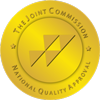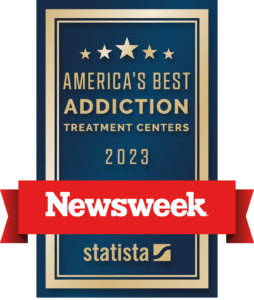The state of Missouri is facing an opioid crisis of epic proportions. It is impacting the lives of communities and families tragically every day. The Department of Mental Health (DMH) has obtained two federal grants from the Substance Abuse and Mental Health Services Administration (SAMSA) to provide the following services in its opioid crisis response:
- Prevention
- Treatment
- Recovery
SAMSA manages State Opioid Response (SOR) and State Targeted Response (STR) grants for the opioid crisis response. These grants objectives are geared toward the following areas:
- Reducing unmet treatment needed
- Increasing access to treatment
- Reducing opioid overdose-related deaths through treatment, recovery, and prevention activities for individuals undergoing opioid use disorder (OUD)
What Are The Opioid Crisis Response Grants?
Missouri received $10 million through STR for each of FY 2017 and 2018, and $18 million through SOR in FY 2018 and 2019, according to the Missouri Department of Mental Health. This was followed by an additional $9.5 million in supplemental funding. Missouri has received $66 million through both grants.
The Missouri Institute of Mental Health (MIMH) and DMH are leaders of this project. The collaborative partners include:
- Drug use disorder and healthcare agencies
- Academic affiliates throughout the state
- Organizations
Missouri received the grant in May 2017. The fundamental goals of the Opioid SOR/STR project include:
MO-HOPEProject.Org
The DMH provides leadership and coordination along with the National Council on Alcoholism & Drug Abuse (NCADA) leading the implementation and MIMH leading the evaluation and administration of the program. The grant was received in September of 2016. The main goal of the Missouri-Opioid Heroin Overdose Prevention and Education (MO-HOPE) Project is to reduce the amount of opioid overdose-related deaths and ultimately adverse events among people 18 years old or older.
The key elements of this grant include:
- Key community sectors on opioid overdose-related death prevention
- Drug use disorder treatment providers
- Emergency responders
The fundamental focus includes:
- The purchase and distribution of Naloxone to individuals at risk of witnessing or experiencing an overdose
- Secondary prevention techniques
MO-HOPE training is for professional and diverse community audiences that focuses on evidence-based practices to overall reduce overdose rates through public health and harm reduction strategies.
Prevention Grant Goals
- Provide increased access to harm reduction services such as Naloxone distribution and overdose education
- Promote opioid-related primary prevention in communities and schools
- Lead chronic pain management education for providers
Treatment Grant Goals
- To supply hospital-based screening, connection with community care in the St. Louis area, with statewide expansion, and treatment induction
- Recruit, support, and train providers for the delivery of medication treatment for opioid use disorder (OUD)
- To provide medication treatment for individuals who are uninsured with OUD that utilizes a chronic disease management model
- Increase the access to telemedicine for OUD treatment
Recovery Grant Goals
- Build the workforce of certified peer specialists to assist individuals to meet their recovery goals
- Promote recovery and wellness through recovery community centers in high-need areas
- Support effective and safe recovering housing
NoMoDeaths
The Missouri State Opioid Response (SOR and SOR 2.0) and Missouri Opioid State Targeted Response projects expand access on the following for individuals struggling with stimulant use disorder (StimUD) and opioid use disorder (OUD).
- Harm reduction services
- Integrated prevention
- Recovery support
- Treatment
The State of Missouri Department of Mental Health (DMH) is leading the project with:
- Evaluation activities provided by the University of Missouri, St. Louis
- Implementation and administration
The Missouri Institute of Mental Health (UMSL-MIMH) along with:
- Individuals who lived and experienced addiction
- Other content experts around the state
- Behavioral healthcare agencies
- Academic institutions
Recovery Community Centers
Recovery Community Centers (RCC) provide a peer-based community that supports healthy behaviors for people with OUD no matter what phase of recovery or use that they are in and build hope. The RCCs do not provide treatment but support and compassion to assist individuals with connecting them with treatment if that is what they want.
The Missouri Network For Opiate Reform And Recovery
The mission of The Missouri Network for Opiate Reform and Recovery (Mo Network) is to supply actual solutions for individuals struggling with drug use disorder.
They fulfill this by:
- Continued support throughout the recovery process
- Treatment placement resources, and education
- Harm reduction, legislative reform, family support
The St. Louis Empowerment Center
The St. Louis Empowerment Center is a peer-run recovery drop-in center designed to meet each individual’s needs who have lived and experienced drug use and mental health issues.
Healing House
Healing House, Inc. is a faith-based, non-profit substance abuse recovery organization. It works in the Kansas City metropolitan area to provide stable and safe spaces for personal and spiritual growth and purposeful guidance. The support is geared toward men and women who are dedicated to overcoming their addiction and becoming productive and responsible drug and alcohol-free members of the community.
Springfield Recovery Center
The mission of the Springfield Recovery Center is to foster dignity and deal hope for individuals who live with drug use and other mental health issues through:
- Education and awareness events that celebrate individuals in long-term recovery
- Community service
Recovery Lighthouse, Inc.
Recovery Lighthouse, Inc. is a nonprofit substance abuse recovery support agency based in Johnson and Pettis Counties of Missouri. This organization offers support and resources including conjoint, individual, and coaching, and group counseling services.
The Opioid Crisis Statistics
The opioid crisis response has been increasing in Kansas City and statewide. According to the data from the CDC, Center for Disease Control and Prevention, the predicted amount of synthetic opioid deaths in Missouri rapidly increased during the COVID-19 pandemic.
In the United States, there were 67,367 deaths relating to drug overdose reported in 2018, and 4.1% fewer deaths than in 2017. The age-adjusted rate declined by 4.6% to 20.7 per 100,000 of the standard population. The decline continues to follow an increasing trend in the rate from 6.1 in 1999 to 21.7 in 2017.
The opioid crisis response overdose deaths were involved in 46, 802 which is a rate of 14.6 in 2018 so nearly 70%.
Almost 40% of individuals between the 12 months ending in February 2020 to the months ending in February 2021. The synthetic opioids include the drug fentanyl, which is an omnipotent form of morphine used often to make Heroin more powerful.
Even though there were significantly fewer total deaths from synthetic opioids in Kansas, the state still witnessed an increase of more than 125% of deaths from synthetic opioids in the same period.
Exclusively according to data from the Missouri Department of Health and Senior Services, in the Kansas City area, in general, opioid overdose-related deaths increased by almost 56% from 93 in 2019 to 145 in 2020. The Drug Enforcement Administration issued a public safety alert on Sept. 27 by for the first time in six years regarding fentanyl-laced counterfeit prescription pills.
What Are These Counterfeit Prescription Pills?
The pills look like commonly used drugs such as oxycodone, Adderall, or Xanax, but they typically contain deadly doses of fentanyl.
Miles Aley, assistant special agent in charge of the DEA’s St. Louis Division said, “Teenagers will purchase these through social media or the dark web, and they think because it’s a pill that it must be safe. If you’re getting a pill that didn’t come from a pharmacist…you have no idea what you’re taking. These pills look identical to the naked eye.”
As the DEA focuses on seizing fentanyl, others are directing their efforts as well towards preventing overdose deaths and making opioid drug use less hazardous. Chad Sabora, cofounder of Sana Lake, one of the most known heroin detox centers in Missouri, who has opiate use disorder, has spent several decades trying to eliminate misinformation and strategize to keep other individuals who engage in drug use safe from overdosing.
He stated, “Contrary to what even some police officers and EMS workers believe, fentanyl is not threatening to touch.” In multiple demonstrations, Sabora has rubbed fentanyl against his arm to prove that it poses no danger unless it’s injected or inhaled.
He closes with, “The very real danger is for people who inject fentanyl and may overdose.” In these occurrences, here at Sana Lake, one of the heroin detox centers in Missouri, we teach our individuals and encourage the general public to counteract Fentanyl to prevent death.
How To Recognize And Respond To An Overdose
A senior program support coordinator at the Mid-America Addiction Technology Transfer Center, stated, “A Fentanyl overdose affects a person’s ability to breathe. Once an overdose occurs, an individual’s brain is no longer able to communicate with the lungs. This is the exact reason that rescue breathing is important. During the rescue breathing process, an individual’s other organs can regain any lost function. Holliday stated, “When a person isn’t breathing, their nails and lips turn blue and they make a gurgling noise.
To see if the individual is truly unconscious, rather than just sleeping, Holliday recommends forming a fist and rubbing the individual’s chest in a circular motion with the person’s thumb pointing upward. If there is no response from the person, Holliday advises administering Naloxone.
Sabora suggests utilizing a mnemonic trick such as ABC to assist individuals in remembering how to respond most effectively to an overdose.
Administer naloxone.
It must begin working as soon as possible since fentanyl overdose can be extremely deadly ranging from 3 to 20 minutes. Commonly, Narcan is given nasally by inserting the spray directly into the individual’s nostril. The instructions can typically be found in the box.
Breathe for the individual.
Fentanyl overdoses cause an individual’s breathing to slow down in that it does not affect the heart directly. For this very reason, many advocates such as Sabora highly recommend rescue breaths without chest compressions. For this to occur, tilt the individual’s head back, clear their mouth of obstacles, then place your lips around their entire mouth. From there, give deep breaths, which should ideally be strong enough to make the individual’s chest. This is to be repeated for several minutes.
Call 911, then continue the process of breathing for them.
All ambulances come equipped with naloxone, which will be administered through injections for individuals who are unresponsive as part of what Sabora called a “coma cocktail.”
Sabora insinuated that 911 operators are trained to keep callers on the line to prevent panicking. However, he recommends resuming rescue breathing as soon as the ambulance is on its way. Sabora also recommended administering a second dose of naloxone if the unconscious individual does not respond in three minutes.
Multiple advocates stress the importance of Missouri utilizing a good Samaritan law. The Samaritan law will prevent any individual involved from being charged with a crime. This includes the individual experiencing an accidental overdose and the individual administering naloxone. The exception is if the individual experiencing the overdose has a warrant for their arrest, in which they would be charged for drug use.
Burgess at University Health regularly encounters individuals who engage in drug users who have no idea that they injected fentanyl instead of Heroin while at his work at the addiction services center. Many individuals undergo an overdose before they even know that their substances have been laced with fentanyl.
Defeat Opioid Addiction Today
An estimated 235,000 individuals in Missouri have misused prescription drugs last year, which can cause negative health effects including overdose death and addiction. However, by attending one of the best heroin detox centers in Missouri, this can be prevented. Contact us today to get started on the journey.



